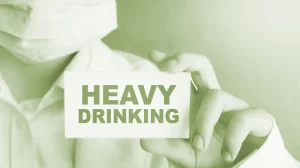
We believe in treating the whole person, not just the symptoms of addiction. Our holistic approach addresses the physical, psychological, and emotional aspects of alcoholism, ensuring that our clients receive the best possible care and support on their journey to sobriety. When it comes to understanding alcoholism, it is important to recognize that it is not simply a matter of willpower or moral failing. It is a disease that affects the brain and behavior, and it requires professional help and support to overcome it. The impact of alcoholism is far-reaching, affecting not only the individual but also their loved ones and society as a whole. Even mild symptoms can have negative effects in a person’s life, both personally and professionally.
Severe effects of alcohol on skin
This can lead to widespread inflammation and damage to various organs, including the eyes. Jaundice can be a physical sign of liver problems, where the skin takes on a yellowish-brown tone due to high levels of bilirubin in the body. While many things could lead to you developing jaundice, a common cause is high levels of alcohol consumption. While the concept of “alcoholic eyes” reflects one aspect of the effects of alcohol, the broader picture is important to keep in mind as well. With the right knowledge and support, turning the page to a healthier chapter is entirely possible! Stay curious, stay informed, and give your eyes (and the rest of your body!) the care they deserve and the opportunity to thrive.

How to Recognize the Signs of Intoxication

If you want to know more about alcohol use disorder, including treatment options and what counts as a “standard drink” in the United States, you can visit the NIAAA Rethinking Drinking website. Some healthcare professionals may use an older tool to screen for alcohol use disorder called the CAGE Questionnaire. If someone you know meets at least two of the following criteria, they may have an alcohol use disorder and need help. Treating alcohol use disorder requires managing a few different things, including detox, treating the underlying addiction and also offering aftercare and support for continued sober living.
- This weakened immune system can also slow down the healing process, leading to prolonged recovery times for injuries and wounds.
- If you think you or someone you know has alcohol use disorder, you can find help and resources.
- In the short term, being drunk can cause blurry vision and abnormal eye movement by slowing down your central nervous system and your brain’s ability to receive signals from your eyes.
- Persistent skin sores and skin infections are more common in people with weakened immune systems.
- This can also lead to anemia, when your red blood cell (RBC) count is lower than normal or there’s a problem with the hemoglobin protein inside those cells.
If your loved one needs help

However, alcohol can slow down the ability for your eyes to dilate or constrict. If you or a loved one is struggling with alcoholism, please know that help is available. Call us or reach out physical characteristics of alcoholics to us online today and take the first step towards a brighter, alcohol-free future. Children of a parent with alcohol use disorder may be more likely to develop the condition later in life.

Thrombocytopenia (Low Platelet Levels)
Get a free initial assessment with a therapist, to help you take the first step towards recovery. More and more people are sober curious, toying with the notion of drinking less. A person can usually tell when they are intoxicated, but it may be challenging to spot the signs in others. Once stabilized, the goal is to transition from detox, to treatment, to maintenance (practicing sober living by changing your life), to transcendence—the final step in the path to recovery. One study found that women who consumed eight or more drinks a week perceived themselves as looking older than those who didn’t drink (8). These correlations may contribute to several possible complications or effects on the eyes.
Alcohol-related physical symptoms can vary in how well they can be treated and how permanent the effects are. Inflammed blood vessels, rashes, sagging eyes, and odor issues can all be eased or eradicated through reduced alcohol consumption and medical treatment. Others, such as jaundice caused by liver disease and skin cancer are less treatable and are often a sign of end-stage alcoholism. When you think of alcoholic eyes, you might only think of their classic bloodshot, droopy, and glassy appearance. But the truth is, heavy alcohol use can do more than just affect the way your eyes look. In the long term, it can put you at risk of eye health conditions and vision loss that can negatively impact your quality of life.
Alcohol and Mental Health
- For example, many people have occult eye muscle imbalances, but the sober brain can preserve crisp, single vision.
- It also widens blood vessels, which is what gives the eyes a red, swollen, and bloodshot appearance.
- While our focus today is on the eyes, it’s crucial to recognize that they’re just one part of the story.
- Your muscles might not move as effectively while you are under the influence of alcohol.
- We publish material that is researched, cited, edited and reviewed by licensed medical professionals.
With the right help and support, individuals struggling with alcoholism can regain control of their lives and achieve long-term sobriety. Long after the acute effects of intoxication have faded, excessive alcohol consumption can continue to cause health risks. Remember that recovery from alcohol abuse is a journey that requires ongoing commitment and support. Prioritizing https://ecosoberhouse.com/ your eye health as part of your overall well-being is essential for maintaining optimal vision and preventing further complications. This is called ‘alcohol flush reaction’ and it happens when your body is unable to fully digest all the alcohol you’ve consumed. This means that the toxins in alcohol, including acetaldehyde, can build up in your body.
- Alcohol intoxication occurs when a person drinks an excess of alcohol in one period.
- Alcohol eyes are more than just a visible sign of alcohol consumption; they can be a window into the broader impacts of alcohol on an individual’s health.
- This effect on the brain’s dopamine system can lead to alcohol dependence.
- For women, it’s defined as three drinks a day or more than seven drinks a week (1).
- Listen to relatives, friends or co-workers when they ask you to examine your drinking habits or to seek help.
- While these problems are usually temporary, knowing how to address them can make all the difference in turning your day around.
0 Comments